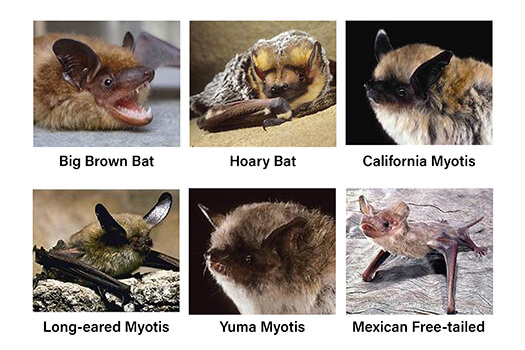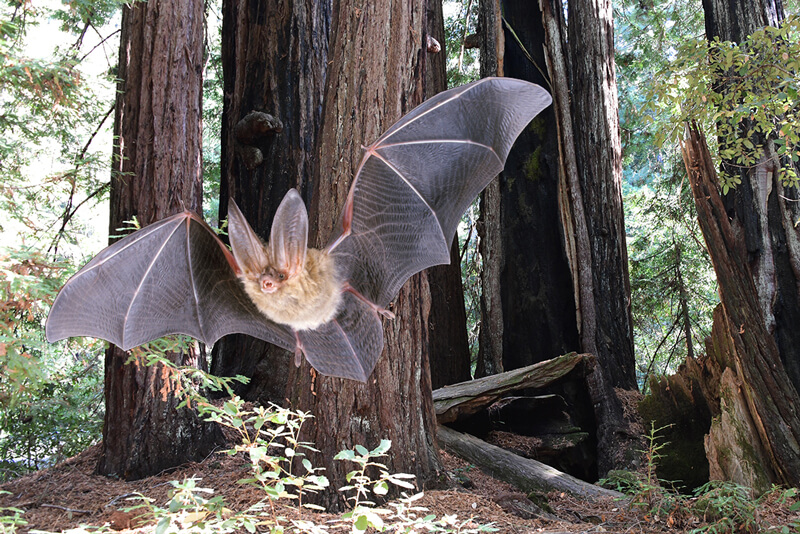Bats of the Redwoods
photo by U.S. Fish and Wildlife Service.
Species Documented in San Vicente Redwoods
“I’ve detected six species here,” said Townsend. “It’s likely that another six species also inhabit the area, given the similarity of this terrain to other study locations.” The species Townsend has documented here are the Big brown bat (Eptesicus fuscus), Hoary bat (Lasiurus cinereus), California myotis (Myotis californicus), Long-eared myotis (Myotis evotis), Yuma myotis (Myotis yumanensis), and Mexican free-tailed (Tadarida brasiliensis).” Sempervirens Fund staff have also seen Townsend’s big-eared bat (Corynorhinus townsendii), like in the photo below, elsewhere on the property. While some researchers use nets to catch and release bats or study their droppings, Townsend relies on acoustic recordings. She uses a single Pettersson D500x monitoring device with a microphone secured 20 feet above the ground in a large bay tree.

Why Do Bats Love the Redwoods?

We don’t know exactly why bats are drawn to redwoods, but we can speculate. The large basal hollows (openings) — known colloquially as goose pens — that form at the base of old-growth redwoods from fire may be easy for bats to navigate. Redwood bark is also soft, with deep crags in which smaller species have been found to shelter. For researchers like Townsend, the best place to find nesting bats is around the perimeter of forests near waterways — bats like to rest close to where they hunt. All the species documented in San Vicente Redwoods are insectivores, meaning they eat only insects.
The Importance of Bat Research in Redwoods
Apart from being a great, and possibly spooky, Halloween topic, Townsend’s research on bats shows us once again why protecting redwoods and their environs is such critical and important work. “These species rely on redwood forests for their very survival,” she added. “We need to do more research to know exactly how bats and redwoods are so interconnected.”
More to Explore:
- Read more about wildlife at San Vicente Redwoods with Restoring San Vicente Creek to Save Endangered Salmon
- Read about how San Vicente Redwoods is a “Living Laboratory” for Wildfire Resilience, Wildlife Protection and Ecosystem Restoration
- Read more about Protecting Wildlife in the Santa Cruz mountains

